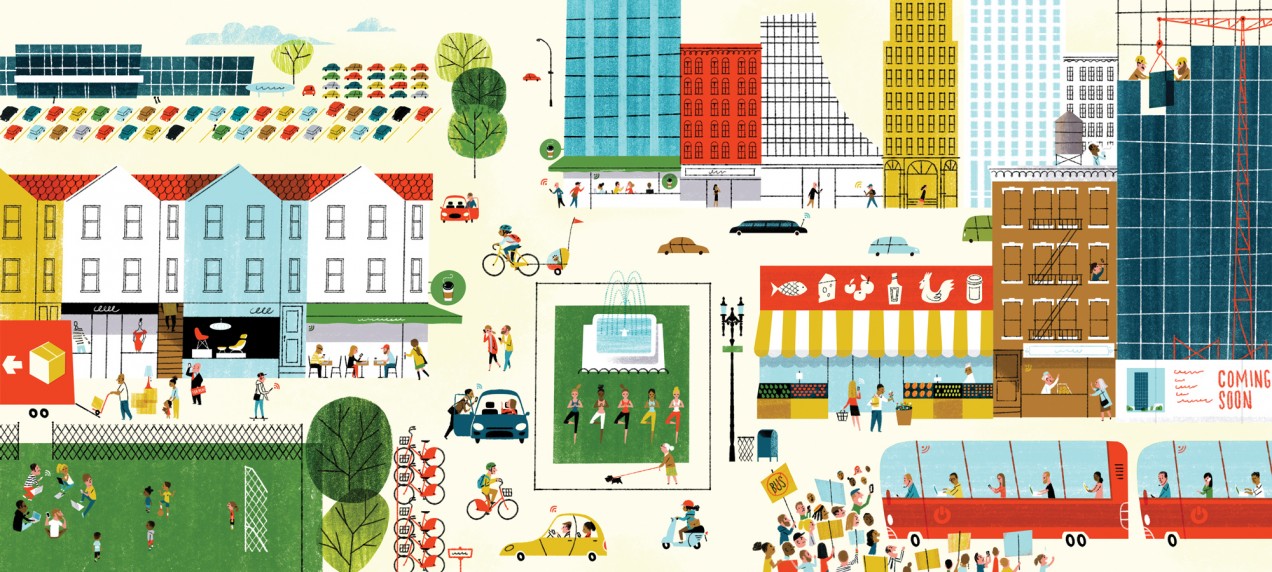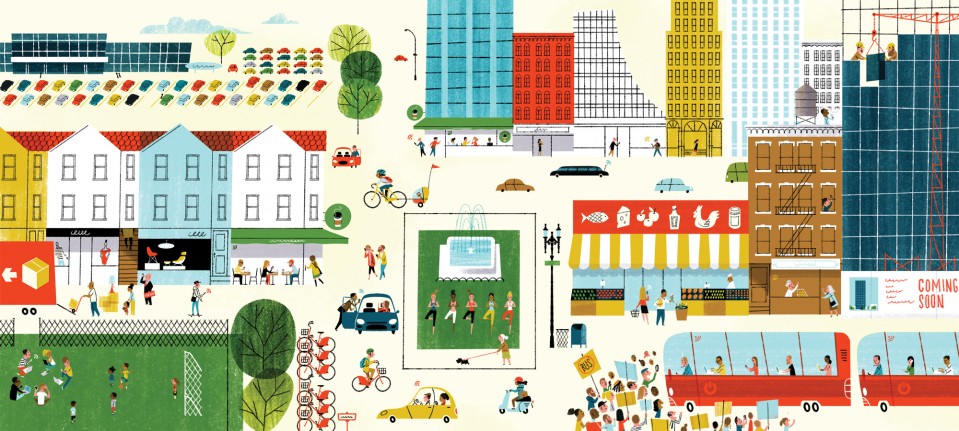

Business Impact
The Unaffordable Urban Paradise
Tech startups helped turn a handful of metro areas into megastars. Now they’re tearing those cities apart.

In the 1980s, I was part of a team doing research into the geography of the high-tech industry. We couldn’t find a single significant high-tech company in an urban neighborhood. Instead, they were all out in the suburbs—not just Intel and Apple in Silicon Valley, or Microsoft in the Seattle suburbs, but the Route 128 beltway outside Boston, and the corporate campuses of North Carolina’s Research Triangle.
Now everything’s changed. In 2016, the San Francisco metro area was the top location for venture capital investment in the country, hauling in $23.4 billion—more than triple the VC investment in Silicon Valley proper. New York had virtually zero VC-backed startups in the 1980s, but last year it took in $7.6 billion, eclipsing Silicon Valley as well. Boston and Cambridge were close, with $6 billion. Los Angeles drew $5.5 billion. The likes of Google, Apple, Microsoft, and Facebook continue to maintain suburban campuses, but more than half of venture-capital-financed startups are now in dense urban neighborhoods. Amazon’s headquarters are in downtown Seattle, and Google has now taken over the old Port Authority building in Manhattan.
The migration of high-tech startups to cities is less of a reversal and more of a historical correction. In 2006, the venture capital icon Paul Graham said that for all its power, Silicon Valley had a great weakness. The high-tech “paradise” created during the 1950s and 1960s “is now one giant parking lot,” he said. “San Francisco and Berkeley are great, but they’re 40 miles away. Silicon Valley proper is soul-crushing suburban sprawl. It has fabulous weather, which makes it significantly better than the soul-crushing sprawl of most other American cities. But a competitor that managed to avoid sprawl would have real leverage.”
And that’s what happened. Urban areas provide the diversity, creative energy, cultural richness, vibrant street life, and openness to new ideas that attract startup talent. Their industrial and warehouse buildings also provide employees with flexible and reconfigurable work spaces. Cities and startups are a natural match.
For years, economists, mayors, and urbanists believed that high-tech development was an unalloyed good thing, and that more high-tech startups and more venture capital investment would “lift all boats.” But the reality is that high-tech development has ushered in a new phase of what I call winner-take-all urbanism, where a relatively small number of metro areas, and a small number of neighborhoods within them, capture most of the benefits.
Middle-class neighborhoods have been hollowed out in the process. In 1970, roughly two-thirds of Americans lived in middle-class neighborhoods; today less than 40 percent of us do. The middle-class share of the population shrank in a whopping 203 out of 229 U.S. metro areas between 2000 and 2014. And places where the middle class is smallest include such superstar cities and tech hubs as New York, San Francisco, Boston, Los Angeles, Houston, and Washington, D.C.
Despite all this, it wouldn’t make any sense to put the brakes on high-tech development. Doing so would only cut off a huge source of innovation and economic development. High-tech industry remains a major driver of economic progress and jobs, and it provides much-needed tax revenues that cities can use to address and mitigate the problems that come with financial success.
But if high-tech development causes problems, and stopping it doesn’t solve those problems, what comes next?
High-tech companies should—out of self-interest, if for no other reason—embrace a shift to a kind of urbanism that allows many more people, especially blue-collar and service workers, to share in the gains of urban development. The superstar cities they’ve helped create cannot survive when nurses, EMTs, teachers, police officers, and other service providers can no longer afford to live in them.
Here’s how they can do it. First, they can work with cities to help build more housing, which would reduce housing prices. They can support efforts to liberalize outdated zoning and building codes to enable more housing construction, and invest in the development of more affordable housing for service and blue-collar workers.
Second, they can work for, support, and invest in the development of more and better public transit to connect outlying areas to booming cores and tech clusters where employment is—and to spur and generate denser real estate and business development around those stops and stations.
Third, they can engage the wider business community and government to upgrade the jobs of low-wage service workers—who now make up more than 45 percent of the national workforce—into higher-paying, family-supporting work.
This last idea might seem outlandish, but it’s analogous to how the U.S. turned low-paying manufacturing jobs of the early 20th century into middle-class jobs in the 1950s and 1960s. At age 13, my father left school to work in a factory. It took nine people—his father, his mother, six brothers and sisters, and him—to generate enough income to support the family. But when he came back after serving in World War II and took up work in the same factory, his old job paid enough to support a wife and kids, buy a house, and put my brother and me through college. His job had been transformed by New Deal policies that boosted the pay of manufacturing workers.
We can do this for service jobs today, and we can start by lifting the wage floor. If we were to set the minimum wage to 50 percent of the prevailing local median wage, it would vary from city to city, ranging from a high of around $15 an hour in San Jose and Washington, D.C., to roughly $14 in San Francisco, about $13 in Boston, New York, and Seattle, and around $9.50 in less expensive places such as Las Vegas, Louisville, Memphis, Nashville, New Orleans, Orlando, and San Antonio.
In the 1980s and 1990s, leading manufacturing companies worked closely with their suppliers to upgrade manufacturing jobs, pay blue-collar workers more, and engage them in teamwork and lean production—which led to higher productivity and performance. Paying better wages to service workers would do for companies in the service sector what it once did for manufacturing firms.
Despite its creative energy and innovative prowess, America’s tech industry has generated a host of challenges for cities. It’s time to put its tremendous resources, talent, and skills to work helping cities solve the urban crisis it helped to create
Richard Florida is a professor at the University of Toronto’s Rotman School of Management, and the cofounder and editor-at-large of the Atlantic’s CityLab. His books include The Rise of the Creative Class and the just-released The New Urban Crisis.